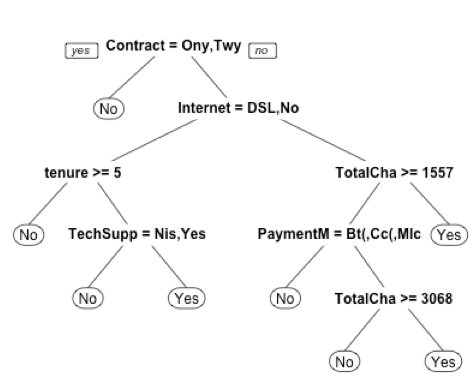I have a data set of 2300 entries, with 5 variables one of them the dependent variable which is binary.
I fitted a decision try using the rpart function in R over the 4 independent variables, and I had this tiny tree, which means the split was done using only one predictive variable.


